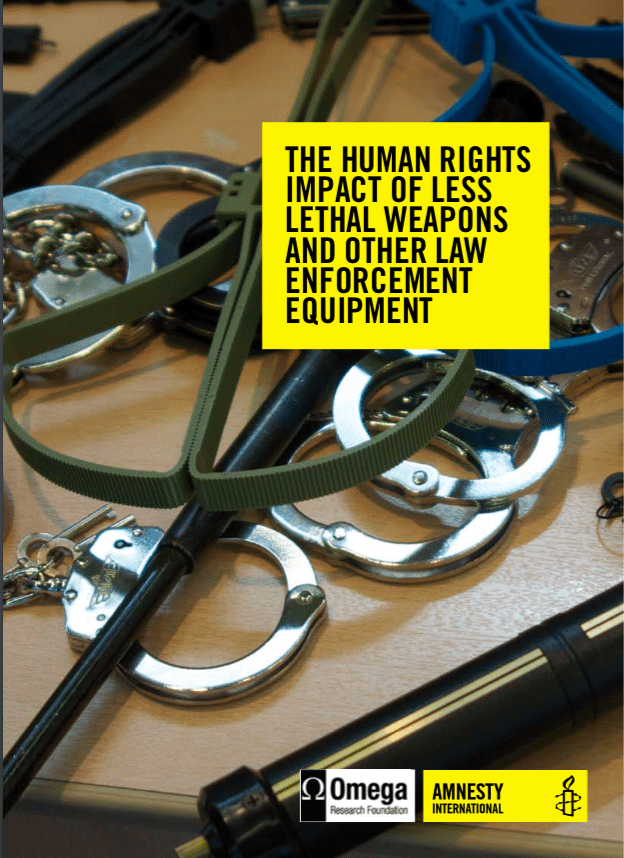Law enforcement agencies around the world regularly misuse so-called “less-lethal” weapons and equipment for torture and their use can also have deadly consequences, Amnesty International and the Omega Research Foundation said as they launched a new briefing at the United Nations Crime Congress in Doha, Qatar.
The Human Rights Impact of Less Lethal Weapons and Other Law Enforcement Equipment details the medical and other risks associated with a wide range of weaponry and equipment used in policing, including crowd control during demonstrations, as well as in prisons. And it recommends stricter controls or, in some cases, bans to stem future abuses.
Amnesty International and Omega acknowledge the importance of developing less-lethal weapons, equipment and technologies, to reduce the risk of death or injury inherent in police use of firearms and other existing weapons.
When used responsibly by well-trained and fully accountable law enforcement officials, less-lethal weapons can prevent and minimize deaths and injuries to assailants, suspects and detainees, as well as protect the police and prison officers themselves.
But such equipment can have damaging and even deadly effects if it is not used in compliance with international human rights law and standards. It can also have a particularly harmful impact on some people, including the elderly, children, and pregnant women, or those with compromised health. Amnesty International has documented how law enforcement officials commit a wide range of human rights violations using such equipment –including torture and other ill-treatment in custody, as well as excessive, arbitrary and unnecessary use of force against demonstrators.
The briefing covers five categories of equipment:
In cases where the items have a legitimate use, the organizations recommend controls to prevent their misuse. In the case of new technology which is not yet adequately tested, suspension pending further research by independent experts is recommended. Lastly, the organizations call for prohibitions on equipment which has no legitimate purpose which cannot be achieved by safer alternatives.
Less-lethal weapons and restraints have developed considerably since the adoption of some international human rights standards relevant to law enforcement. For example, since the UN Basic Principles on the Use of Force and Firearms were adopted in 1990, a range of ever more advanced weaponry and other technologies have come into use by law enforcement agencies around the world.
With the exception of the USA and the European Union, the trade in security and law enforcement equipment is either unregulated or subject to laxer restrictions than the trade in conventional weapons. Amnesty International and Omega are calling for stricter controls, including a licensing system for transfers of law enforcement equipment to safeguard against its potential abuse by the end user.
-
Restraints: thumb cuffs, fixed cuffs, leg irons and restraint chairs;
- Kinetic impact devices: police batons and other striking weapons, spiked batons and kinetic impact projectiles including plastic bullets, rubber bullets, baton rounds and bean bag projectiles;
- Riot control agents: chemical irritants such as tear gas and pepper spray, including those dispensed from fixed installation dispensers;
- Electric shock devices: Tasers and other projectile electric shock devices, stun batons, stun shields and body-worn electric shock equipment such as stun belts;
- Acoustic devices and other technologies used to disperse crowds: audible sound wave technology that emits a deterrent noise, as well as water cannon.

